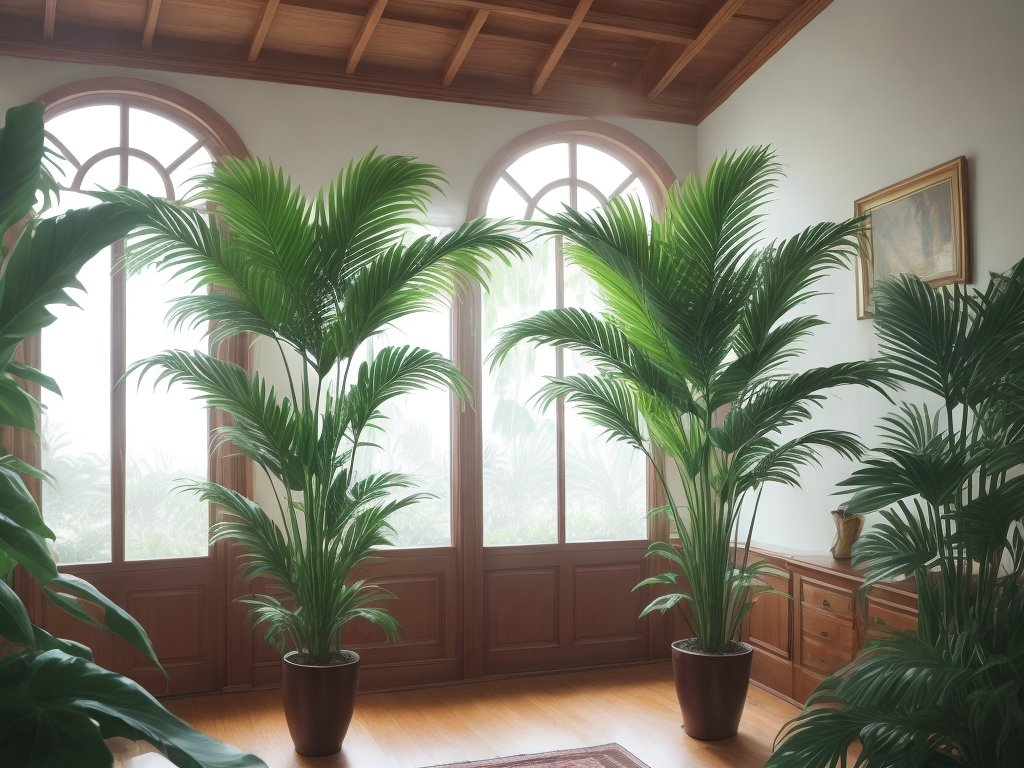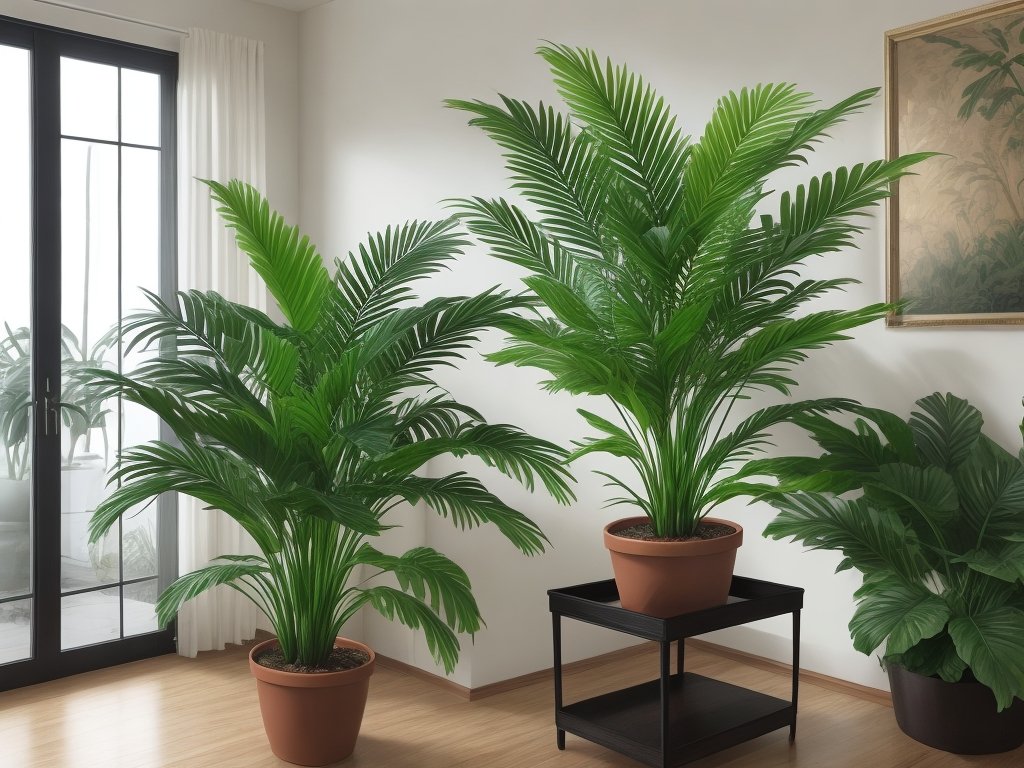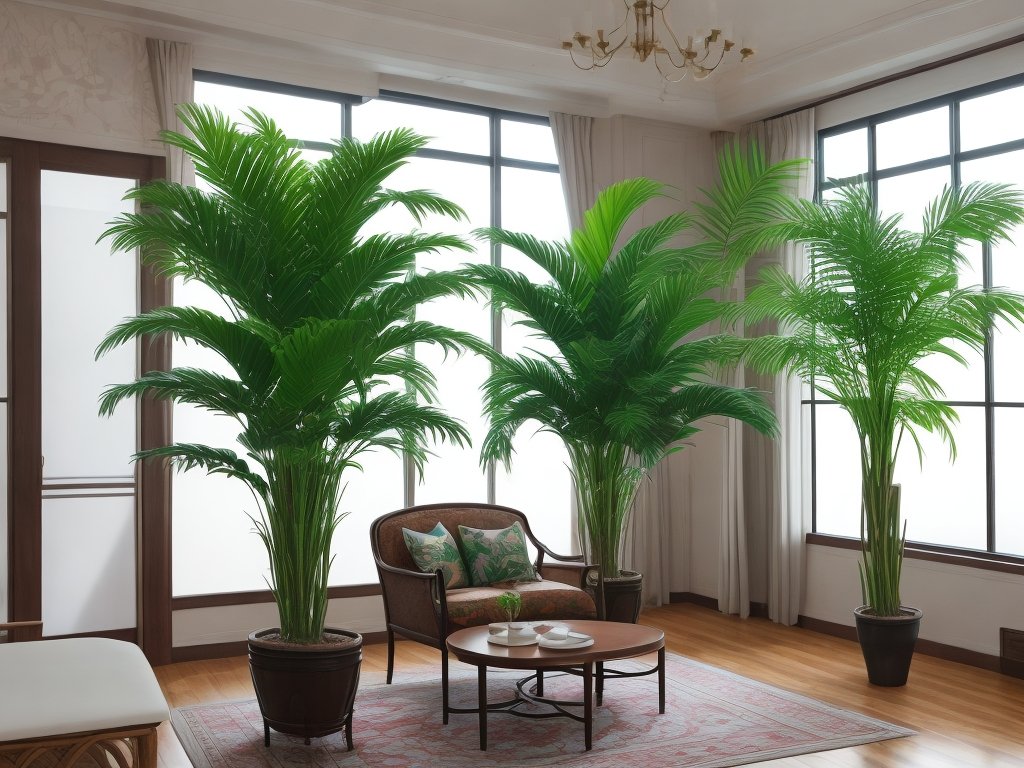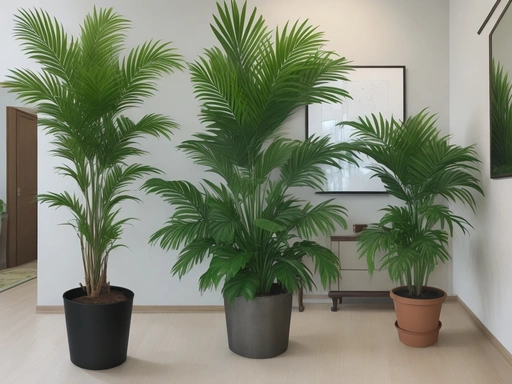Parlor Palm And Plant Photography: Capturing Nature’s Beauty
Key Takeaways:
- Parlor palms are a popular choice for indoor plants due to their low maintenance requirements and ability to thrive in low light conditions.
- When photographing plants, consider lighting, framing, and composition to capture their unique beauty and create compelling images.
Are you looking to add a touch of greenery to your space while also capturing its beauty through the lens? Look no further than the Parlor Palm! This beautiful and versatile plant not only brings life and freshness to any room, but it also makes a fantastic subject for plant photography.
In this article, I’ll guide you through understanding the Parlor Palm and provide tips and techniques for capturing stunning photos of this elegant plant.
Get ready to enhance your space and photography skills with the Parlor Palm!
| Parlor Palm | Plant Photography | |
| Description | A small, compact palm tree with delicate, feathery fronds. | The art of capturing the beauty and essence of plants through photography. |
| Benefits |
|
|
| Care Tips |
|
|
| Challenges |
|
|
Understanding the Parlor Palm
The Parlor Palm is a popular indoor plant known for its elegant appearance and low maintenance requirements.
Characteristics and Features of the Parlor Palm
The Parlor Palm, also known as Chamaedorea elegans, is a popular indoor plant due to its elegant appearance and easy care requirements.
It features feathery, arching green fronds that give it a tropical and graceful look.
This plant can reach a height of about 4-6 feet, making it a great option for smaller spaces.
Additionally, the Parlor Palm is known for its air-purifying qualities, improving the overall indoor air quality.
With its compact size, attractive foliage, and low maintenance needs, the Parlor Palm is a fantastic choice for plant lovers of all levels of experience.
Caring for the Parlor Palm
Caring for the Parlor Palm is quite easy.
Here are some simple tips to keep your plant healthy:
- Light Requirements: Place your Parlor Palm in bright, indirect light. It can tolerate low light conditions, but it thrives in moderate to bright light.
- Watering and Humidity: Water your Parlor Palm when the top inch of soil feels dry. Don’t overwater, as it can lead to root rot. Parlor Palms prefer slightly humid environments, so misting the leaves occasionally can help.
- Soil and Fertilizer: Use well-draining potting soil for your Parlor Palm. Feed it with a balanced liquid fertilizer once a month during the growing season.
- Pruning and Propagation: Trim yellow or brown leaves to maintain neatness. To propagate, divide the clumps into smaller sections and replant.
Remember, the Parlor Palm is a resilient plant, and with these basic care guidelines, it will thrive in your home.
Light Requirements for the Parlor Palm
The Parlor Palm thrives in bright, indirect light.
Avoid placing it in direct sunlight, as this can lead to scorched leaves.
It can tolerate lower light conditions, but too much shade can cause the palm to have weak and droopy growth.
Find a spot with moderate light and your Parlor Palm will be happy!
Watering and Humidity for the Parlor Palm
Water the Parlor Palm when the top inch of soil feels dry, usually every 7-10 days.
Avoid overwatering to prevent root rot.
The Parlor Palm prefers moderate to high humidity levels, so misting or using a humidifier can be beneficial.
Avoid placing the plant near drafts or heaters, as this can dry out the leaves.

Soil and Fertilizer for the Parlor Palm
The Parlor Palm thrives in well-draining soil, such as a mixture of peat moss and perlite.
Avoid overwatering, as it can cause root rot.
Fertilize every few months with a balanced houseplant fertilizer to keep the palm healthy and vibrant.
Avoid using too much fertilizer, as it can burn the plant’s roots.

Pruning and Propagation of the Parlor Palm
To prune the Parlor Palm, remove any yellow or brown leaves at the base. Propagation can be done by division, where you separate the offsets from the main plant, or by planting the seeds.
Just remember to provide proper care and a suitable environment for the newly propagated plants to thrive.

Plant Photography Tips
Capture the beauty of plants with these photography tips.
Improving your plant photography skills is easier than you think.
Importance of Plant Photography
Plant photography is important because it allows us to capture and appreciate the beauty and intricacies of plants.
It helps us document and identify different species, and it can also be used for educational and scientific purposes.
Additionally, plant photography allows us to create stunning visuals, share our love for plants with others, and contribute to the growing community of plant enthusiasts.

Camera Equipment for Plant Photography
Camera Equipment for Plant Photography:
1. Types of Cameras Suitable for Plant Photography:
– DSLR cameras: Allow for manual control and interchangeable lenses. – Mirrorless cameras: Compact, lightweight, and offer excellent image quality.
– Point-and-shoot cameras: Convenient for beginners and casual photographers.
2. Essential Accessories for Plant Photography:
– Macro lens: Capture close-up details of plants. – Tripod: Keeps your camera stable for sharp images.
– Remote shutter release: Reduces camera shake when taking photos.
– Reflector: Helps control lighting and eliminates shadows. – Lens filters: Enhances colors and reduces glare.
Remember, you don’t need expensive equipment to capture beautiful plant photos.
Start with what you have and gradually expand your gear as you grow your skills.
Types of Cameras Suitable for Plant Photography
When it comes to plant photography, it’s important to choose a camera that can capture the intricate details of plants.
Here are three types of cameras that are well-suited for plant photography:
- DSLR (Digital Single-Lens Reflex Cameras: These cameras provide excellent image quality and allow for interchangeable lenses, which is ideal for capturing close-up shots of plant details. DSLRs also offer manual control options, giving you more creative freedom in your photography.
- Mirrorless Cameras: Similar to DSLRs, mirrorless cameras offer high image quality and interchangeable lenses. They are generally more compact and lightweight, making them convenient for outdoor plant photography. Mirrorless cameras also have advanced autofocus systems, which can be helpful when photographing plants that may sway with the wind.
- Compact or Point-and-Shoot Cameras: If you’re just starting out with plant photography or prefer a more portable option, compact or point-and-shoot cameras can still produce great results. Look for models with macro capabilities, as this will allow you to take detailed close-up shots of plants.
Remember, the camera is just one part of the equation.
Technique and composition also play a crucial role in capturing stunning plant photos.
Experiment with different cameras and find one that suits your needs and preferences.
Essential Accessories for Plant Photography
When it comes to essential accessories for plant photography, there are a few key items you’ll want to have in your toolkit.
These include:
- Macro lens: A macro lens allows you to capture intricate details and close-up shots of your plants, making it a must-have for plant photography.
- Tripod: A sturdy tripod is essential for keeping your camera steady and reducing camera shake. It’s especially useful for capturing sharp images in low light conditions or when using longer exposure times.
- Reflector: A reflector helps to manipulate and bounce light onto your subject, allowing you to control the lighting conditions and highlight specific areas of your plant.
- Diffuser: A diffuser softens and diffuses harsh light, helping to create a more even and natural lighting effect on your plant.
- Remote shutter release or self-timer: Using a remote shutter release or the self-timer function on your camera helps to prevent any camera movement when taking photos, resulting in sharper images.
- Cleaning kit: Keeping your camera and lenses clean is crucial for maintaining image quality. A cleaning kit with a microfiber cloth and lens cleaner will ensure your gear stays in top condition.
By having these essential accessories in your photography toolkit, you’ll be well-equipped to capture stunning and detailed images of your plants.
Lighting Techniques for Plant Photography
Lighting is a crucial aspect of plant photography.
Natural light is great for capturing the true colors and textures of plants.
Avoid direct sunlight that can cause harsh shadows and overexposure.
If shooting indoors, use soft, diffused light or a daylight-balanced artificial light source.
Experiment with different angles and intensities of light to create interesting effects and highlight the plant’s features.
Natural Light vs. Artificial Light for Plant Photography
Natural light is ideal for plant photography because it brings out the natural colors and textures of the plant. Position your plant near a window or shoot outdoors.
Artificial light, such as studio lights or grow lights, can be used to supplement natural light or create an ambiance.
Experiment to find the best lighting setup for your plants!
Tips for Using Natural Light Effectively
Natural light can greatly enhance the beauty of your plant photos. Here are a few tips to make the most of it:
- Shoot during the golden hours, which are the first hour after sunrise and the last hour before sunset. The soft, warm light during these times creates a beautiful glow.
- Utilize diffused light by shooting near a window or on an overcast day. This helps to avoid harsh shadows and creates a gentle, even illumination.
- Experiment with different angles to find the best lighting for your subject. Side lighting can add depth and texture while backlighting can create a dreamy silhouette effect.
- Avoid direct sunlight, as it can cause overexposure and harsh shadows. If shooting outdoors, find a shaded area or use a diffuser to soften the light.
- Reflectors can be helpful in redirecting light onto certain areas of your subject. Use a white or silver reflector to bounce light and fill in shadows.
By keeping these tips in mind and experimenting with different lighting conditions, you can capture stunning plant photos using natural light.
Tips for Using Artificial Light for Plant Photography
When using artificial light for plant photography, there are a few key tips to keep in mind:
- Use a light source with a high color rendering index (CRI to ensure accurate color representation.
- Position the light at an angle to create depth and shadow, enhancing the texture and form of the plant.
- Experiment with different types of artificial light, such as LED or fluorescent, to achieve the desired effect.
- Consider using diffusers or reflectors to soften or redirect the light, creating a more flattering and balanced illumination.
- Avoid harsh and direct lighting that can create harsh shadows or blown-out highlights. Instead, aim for a soft and even light distribution.
- Adjust the intensity of the light to suit the plant’s specific needs. Some plants may thrive with more light, while others may require a more gentle touch.
- Regularly monitor the temperature of the artificial light source to prevent heat damage to the plant.
Composition and Framing in Plant Photography
Composition and framing play a vital role in plant photography. Here are a few tips to enhance your plant photos:
- Rule of Thirds: Place your subject at the intersection points of imaginary lines, dividing the frame into thirds horizontally and vertically.
- Fill the frame: Get close to your subject and fill the frame with its details to create a captivating image.
- Perspective and depth of field: Experiment with different angles and depth of field settings to add dimension and interest to your photos.
Remember, composition and framing are subjective, so feel free to experiment and trust your creative instincts to capture stunning plant photos.
Rule of Thirds in Plant Photography
The Rule of Thirds in plant photography is a compositional guideline that can help you create more visually appealing and balanced photos. It involves dividing your frame into a grid of nine equal parts by placing two horizontal and two vertical lines.
The key elements of your photo, such as the main subject or focal point, should ideally be placed along these gridlines or at their intersections.
This technique can add interest and create a sense of balance in your plant photos.
Filling the Frame with Your Subject
To fill the frame with your subject in plant photography, get up close and personal.
Zoom in or physically move closer to capture the intricate details of the plant.
This allows you to create a strong focal point and eliminates distractions.
Experiment with different angles and perspectives to capture unique shots.
Don’t be afraid to fill the entire frame with your subject for a captivating and impactful image.
Playing with Perspective and Depth of Field
Playing with perspective and depth of field can greatly enhance your plant photography.
By changing your shooting angle, you can create unique and interesting compositions.
Additionally, adjusting the depth of field allows you to isolate your subject and create a blurred background, drawing attention to the plant.
Experimenting with these techniques can bring depth and visual interest to your photos.
Combining Parlor Palm and Plant Photography
Combining Parlor Palm and plant photography allows you to capture the beauty of this stunning plant in your photos.
Why Parlor Palm Makes a Great Subject for Photography
The Parlor Palm makes a great subject for photography because of its unique features and beautiful foliage.
Its elegant and lush green leaves create a visually appealing focal point in photos.
The palm’s compact size also makes it easy to capture its intricate details and textures.
Plus, its ability to thrive in various lighting conditions allows for creative experimentation with light and shadows in your photos.
Overall, the Parlor Palm adds a touch of natural beauty and sophistication to your plant photography.
Showcasing the Beauty of the Parlor Palm
The Parlor Palm is a beautiful and elegant houseplant that can be showcased through plant photography.
Its delicate fronds and compact size make it a perfect subject for capturing stunning photos.
By highlighting its unique features, choosing the right angle and perspective, and setting the stage with a complementary background, you can showcase the beauty of the Parlor Palm in your photographs.
Tips for Capturing Stunning Photos of the Parlor Palm
To capture stunning photos of the Parlor Palm, focus on these tips:
- Set the stage: Choose a clean and uncluttered background with complementary colors. Add props that complement the plant’s natural beauty.
- Experiment with angles: Try different perspectives and angles to showcase the unique features of the Parlor Palm.
- Lighting is key: Utilize natural light for a soft, diffused look or artificial light to create dramatic effects. Avoid harsh shadows and glare.
- Highlight the plant: Capture the intricate details of the Parlor Palm, such as its textured leaves or elegant fronds.
- Edit and enhance: Use photo editing software to enhance colors, sharpen details, and adjust lighting if necessary.
- Share your photos: Connect with fellow plant enthusiasts on social media platforms and engage with the community.
Setting the Stage: Background and Props for Plant Photography
When setting the stage for plant photography, consider using a simple and clean background that doesn’t distract from the main subject. Choose a neutral color or a complementary color to enhance the plant’s natural beauty.
As for props, select items that complement the plant’s aesthetic and add visual interest, but don’t overshadow the plant itself.
Elements like natural textures, small decorative objects, or even a simple plant pot can work well as props. Be mindful of the overall composition and ensure that the background and props enhance the plant’s presence in the photo.
Choosing the Right Angle and Perspective for the Parlor Palm
When photographing the Parlor Palm, choose angles that showcase its unique features.
Experiment with different perspectives to add depth and interest to your photos.
Consider shooting from below to emphasize the height and elegance of the plant.
Get close and capture the intricate details of the leaves.
Play around with angles to find the most visually appealing composition.
Highlighting the Unique Features of the Parlor Palm in Your Photos
To highlight the unique features of the Parlor Palm in your photos, focus on its elegant fronds and delicate texture.
Take close-up shots to capture the intricate patterns and details.
Play with lighting to create dramatic shadows or emphasize the plant’s lush green color.
Experiment with different angles and perspectives to showcase its graceful form.
Sharing Your Parlor Palm Photos on Social Media
To share your Parlor Palm photos on social media, start by editing and enhancing your photos to make them visually appealing. Use popular photo editing apps to adjust brightness, contrast, and color.
Add relevant hashtags to increase visibility and engagement.
Engage with the plant enthusiast community by liking and commenting on their posts.
Tips for Editing and Enhancing Your Parlor Palm Photos
When editing and enhancing your Parlor Palm photos, there are a few simple tips to keep in mind. First, adjust the exposure and brightness to make sure the image is well-lit.
Next, enhance the colors to bring out the vibrant green of the plant.
You can also crop the image to focus on the Parlor Palm and remove any distractions. Lastly, consider adding filters or effects to add a personal touch to your photos.
With these tips, you can create stunning Parlor Palm images that showcase the beauty of your plant.
Engaging with the Plant Enthusiast Community
Engaging with the plant enthusiast community is a great way to connect with like-minded individuals who share your passion for plants. Here are a few ways to get involved:
- Join online plant communities: Participate in forums, Facebook groups, and plant-focused websites where you can ask questions, share your knowledge, and learn from others.
- Attend plant-related events: Look for local plant swaps, gardening workshops, or botanical garden tours to meet fellow plant enthusiasts in person.
- Share your plant journey on social media: Start an Instagram account or YouTube channel to showcase your plants and connect with others who have similar interests.
- Collaborate with other plant enthusiasts: Reach out to fellow plant lovers to collaborate on projects, such as plant care guides or joint social media content.
- Volunteer at botanical gardens or plant-related organizations: Not only will you gain valuable experience, but you will also have the opportunity to meet and network with others who share your passion.
Remember, engaging with the plant enthusiast community is about building connections, sharing knowledge, and fostering a sense of camaraderie among fellow plant lovers.
Frequently Asked Questions
How do I know if my Parlor Palm is healthy?
To determine if your Parlor Palm is healthy, check for the following signs:
- Lush and vibrant leaves: Look for green, glossy, and evenly colored leaves. Yellowing or browning leaves may indicate underlying issues.
- Firm and upright stems: The stems should be strong and firm, holding the leaves upright. Weak or drooping stems may indicate a lack of water or nutrient deficiency.
- Adequate growth: The plant should be growing steadily, producing new leaves regularly. If there is no new growth or stunted growth, it could be a sign of improper care or environmental stress.
- Pest and disease-free: Inspect the plant for any signs of pests like mealybugs or spider mites, as well as signs of diseases such as mold or rot.
- Root health: Gently remove the plant from its pot and check the roots. Healthy roots should be white or light-colored, firm, and not mushy or crowded.
Remember, maintaining a healthy environment with proper lighting, watering, and fertilization is key to the overall health of your Parlor Palm.
Can I use my smartphone for plant photography?
Yes, you can definitely use your smartphone for plant photography. Smartphone cameras have improved significantly in recent years and can capture stunning, high-quality photos.
Just make sure to optimize your camera settings, find good lighting, and practice composition techniques to get the best results.
How can I prevent glare in my plant photos?
To prevent glare in your plant photos, there are a few things you can try.
Firstly, avoid shooting in direct sunlight, as this can create harsh reflections.
Secondly, position your camera at an angle to minimize the reflection.
Thirdly, use a polarizing filter to reduce glare.
These simple techniques can help you capture beautiful, glare-free plant photos.
Should I use a tripod for plant photography?
Yes, using a tripod for plant photography is highly recommended. It helps stabilize your camera, eliminating shaky shots.
It allows for longer exposure times, capturing more detail.
Plus, it allows you to experiment with different angles and compositions without worrying about holding the camera steady. So, grab that tripod and get shooting!
Final Verdict
The Parlor Palm is a splendid indoor plant that requires proper care and attention to thrive.
By understanding its characteristics and providing the right lighting, watering, and soil conditions, you can ensure its health and beauty.
When it comes to plant photography, using the right camera equipment and lighting techniques can make all the difference in capturing stunning images.
Combining the Parlor Palm and plant photography allows you to showcase the unique beauty of this plant and create captivating photos.
Remember to share your photos and engage with the plant enthusiast community to further enhance your skills.
Overall, the Parlor Palm and plant photography are a winning combination that can bring joy and creativity to your indoor space.







